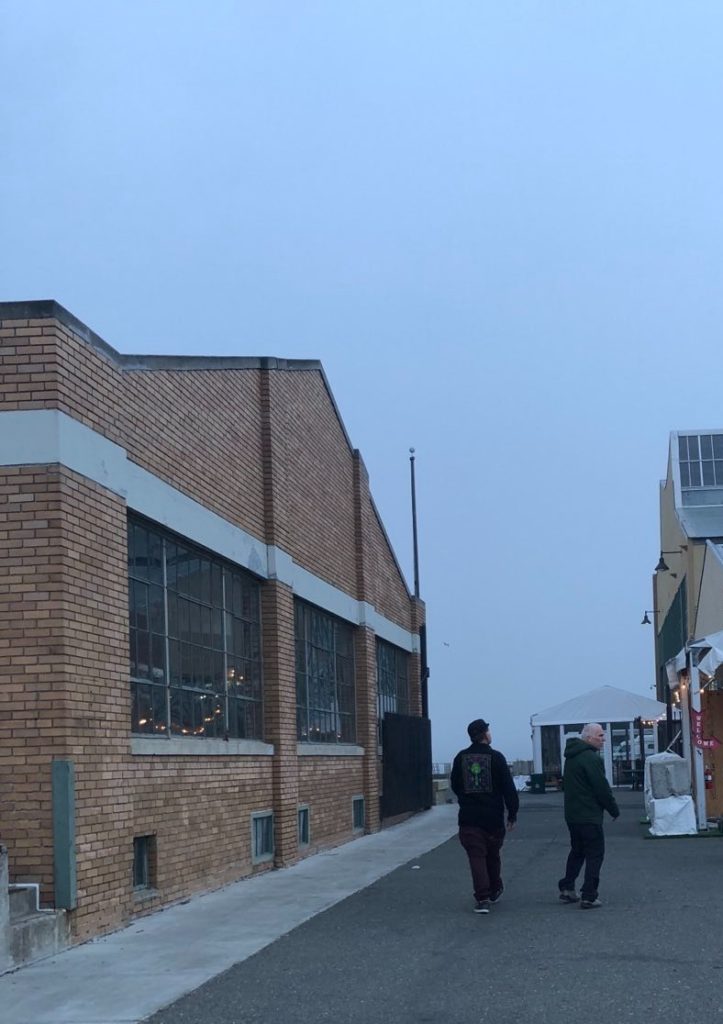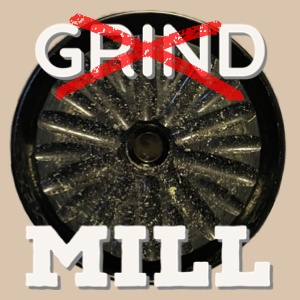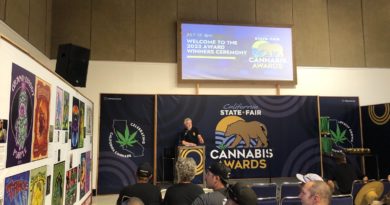SC Labs’ Alec Dixon on why California is the gold standard of cannabis
California’s influence on the world cannabis stage is well known and well documented. Whether it’s the impact of the Hippie Trail, the Emerald Triangle, the medical marijuana movement, the Emerald Cup, rappers from California, the first public facing cannabis hashery, or something else – there’s a reason why The Golden State is known for its green and purple.
Other lesser known signs include heady reviewers in other continents claiming hella clout by saying they only smoke Cali weed, Colorado’s legal market spawning a popular strain named FU Cali, or any other individual cultural signs of homage to Cali. To me at least, clearly California is the gold standard of cannabis and a target for both accolades and aspersions.
This is the late 20th and early 21st century’s global hotspot of breeding, growing, and ultimately cannabis education that has resulted from a unique combination of culture, terroir, and timing.
What is it about California?
For most of my life, I’ve just known that Cali is the spot when it comes to cannabis. In fact, I’m clearly biased. I started smoking in Virginia, and ended up moving across the country to California in 2014 largely to learn more about cannabis. On The Highest Critic, the most popular featured reviews are all about cannabis grown or bred in California. To get a wider, more empirical look at why California is the gold standard of cannabis, I spoke with SC Labs co-founder Alec Dixon. SC Labs is arguably the most well known cannabis testing lab in the world and is the partner for the California State Fair Cannabis Awards and also The Emerald Cup – two of California’s premier cannabis competitions.
Turns out, Dixon also (re)started smoking in Virginia back in the day after he finished his Navy service and also found his way to California in his lifequest for real herb. He told me an anecdote:
“Up to the point when I was in Virginia, I thought I had experience and thought I knew herb.”
It wasn’t until he made contact with California’s cannabis culture that he learned otherwise.
“Tim Blake is my born again weed dad. He became a big teacher and mentor in my life. One day, I got some herb from him. And I knew at that moment that before then, I hadn’t seen real herb.”

I also remember my first time trying verified Cali weed back in 2010. It was in Canada and suffice to say, my socks were rocked.
I shared my thoughts that California’s leading position is due to culture and terroir, and he largely agreed.
“California has a lot going for it. The age of the market, how long there’s been a rich cultivation culture… it’s not only the terroir. When I go to other states, I see California as 10 years ahead. In all the attributes that define craft cannabis, even beyond how it looks, smells, and all those things.”
California is ahead because it sets trends and starts the waves that will eventually reach the rest of the world. We talked about one of those trends that is still being played out, and needs to be replaced.
“Every recreational or medical market goes through this period where they’re hyper focused on THC percentages. But those that are closest to the plant have always known that terpenes and flavor and aromatics and the entourage effect are way more important.”
Dixon sees this changing for the better, eventually.
“I see every market eventually maturing and seeing other ways to understand quality cannabis besides THC %. I think most consumers have never seen farm fresh chronic that is sticky icky and could stick to a window. That’s the great objective. To be able to translate that farm fresh chronic factor to the point that the consumer makes the purchase and can have their socks knocked off. The herb back in the 215 days was bomber, there are many reasons for that but one is the supply chain.”
He described the current issues that consumers face when seeking farm fresh chronic and the only known solution.
“Nowadays, when the farmer lets it go, an average batch takes 35-45 days to go from seal to shelf. 60-90% of the terpene loss can happen before it reaches consumer hands. Some of the most legit brands hold themselves to an ultra quality premium factor and won’t compromise. Those types of people are few and far between in any state. They’re looking to implement what you could call a continuous cold supply chain of custody. The people that are selling out the fastest at the highest prices, they’re very mindfully controlling the temperature that their herb is exposed to at every step of the supply chain because they understand how important these aromatics are to really defining craft and premium quality.”
California celebrates its best cannabis
At a micro level and a macro level. There are plenty of events that are held purely within the cannabis culture that celebrate the magical variety of terpenes found in cannabis, but there’s only one event that I know of that takes the bleeding edge of cannabis and takes it mainstream.
The California State Fair is the largest event trying to educate the broader world about the role of terpenes in their cannabis products. Those that care and can, are doing everything they can to make sure that the next cannabis wave to come out of California is a respect for the entourage effect and the diversity in terpene profiles. Dixon agreed:
“The California State Fair is not part of the culture, it is the larger civilian public. For the first time last year and continuing this year, the state fair, which is the pinnacle of agricultural celebration in the state, is honoring cannabis as an agricultural crop in the state. It’s important for cannabis normalization to destigmatize cannabis to the rest of the world: To help people understand what it is and what it is not.”
Now in its second year, the CA State Fair Cannabis Awards awards the best cannabis from licensed growers in the state with statewide recognition and a Golden Bear Award. This year, the cannabis competition only includes a flower category, but the plan is to eventually expand to hash and edibles.
Dixon told me:
“One of the things I’m grateful to the State Fair for is that they are showcasing terpenes and the small farms.”
California was first in a lot of things
Growing up, you just know. People move to Cali from all over. Listen to Alice of Wooksauce Winery talk about what brought her to California from Brazil and her journey once she got here. The reputation of California as cannabis’s gold standard isn’t just in this state or country or continent, it’s international. Dixon explained to me:
“Whether deserved or not, California was the birth of the medical cannabis movement. The best herb that people have had access to for many decades has been Cali grown herb from The Emerald Triangle. The legacy of that reputation since 1996 when prop 215 passed is still going strong. Historically, especially because of certain events like The Emerald Cup. Cali has been seen in the national and international market as the tastemaker and trend setter for what the future popular strains are. There was a period of time where og kush was the only thing that people wanted. But at a certain point that shifted to the desserts. But what you see happen is that once a trend runs its course in California, years later that flavor preference makes its way to the East Coast and then the international market.”
While pockets of regional terpene profile preferences may still exist, the wave from California is undeniable wherever you go. Dixon mentioned the cons to go with the pros.
“This whole aspect of cali being the tastemaker is a blessing and a curse. It’s a blessing in that we’re so far ahead and have so much experience as a community but the problem is that 60-80% of dispensary shelves are desserts now. From Gelato to Zkittlez to Sundae driver to cakes, and more, there’s a massive homogenization of what strains are available.”
The variety on the dispensary shelves is related to bulk market preferences. Even beyond the dispensary shelves, Dixon noted that Cali leads.
“There’s a lot of regional terpene preference and terpene biases that exists. In certain regions, if they want OG Kush then that’s what they want. Same for Jack and trainwreck. BDS Analytics have shown that terpinolene dominant cultivars in certain areas of OC or SD – when those types of strains are available they go off the shelf 5-8 times faster.”
Good luck finding Terpinolene dominant cultivars on the bulk market at the moment though.
“There’s an underrepresentation of it in the market, there’s demand in the consumer market but the bulk buying market is out of touch.”
These terpene profiles both help highlight the range and diversity of what the cannabis plant can offer and also the fact that it’s not reasonable to compare apples to oranges. Dixon commented:
“How can you judge an OG Kush to a Trainwreck? It’s a different fruit!”
One of Dixon’s missions at SC Labs has been to categorize the different terpene profiles because he feels:
“The best way to pay tribute to this plant is to sort it by the range of what it represents.”
That presents its own issues, though. For the average budtender let alone a customer, talking about Terpinolene might cause some eyes to glaze over – and not in a good way. For this reason, SC Labs groups cannabis cultivars into six different “terpene classes” as a way to inform consumers:
- OGs + Gas Class
- Dessert Class
- Jacks + Haze Class
- Tropical + Floral Class
- Sweet + Dreams Class
- Exotics Class
Dixon continued:
“That was our first crack at putting names to smells. But if you lead in with a smell that can associate with people’s memory. Through appealing to peoples’ senses you can help make this epiphany go off.”
It’s valuable for the end user to correlate smells with different classes of cannabis flower and therefore different effects.
“It’s important to do it in this way because not everybody wants desserts. The desserts – those are some of the highest testing THC strains there are but not everybody wants that. It’s a very specific effect and that might not agree with you. Our nose is what should guide us. If something smells really good to you, that’s a good sign. For certain people, the taste of cilantro is like soap. The taste of cacao is too bitter for them to even eat. We need to honor the diversity of humans and our diversity of sense and smell. Cannabis is for everybody. It’s just about finding the right type for you that hits your endocannabinoid system the right way.”
Your nose really knows, Dixon implored:
“There’s nothing more dialed in than the human olfactory system. It’s a very intuitive thing that you can use.”
Celebrating Primary Terpenes at the CA State Fair Cannabis Awards
For the CA State Fair Cannabis Awards and its audience that might not know a Jack from a Haze from a Dream from an OG or a Dessert, SC Labs is using Primary Terpene classes instead:
“It’s slightly different than with the Emerald Cup. We’re doing it by primary terpene. So All terpinolene dominant entries will be competing against each other.”
The education portion will be emphasized on the fairgrounds in the state’s capitol:
“In our display, we’re helping to tell the story of the primary and secondary terpenes in cannabis. We’re also paying homage to the other trace volatile compounds that add to cannabis’s smell. After all, it’s not just terpenes. That Chem, sour diesel, or even that gas smell isn’t from terpenes but rather from thiols which are sulfuric type compounds. The human nose can pick those up in parts per trillion. That’s why they add the rotten egg smell to odorless natural gas so you can smell a leak.”
Dixon explained:
“The most prevalent chemicals in cannabis are: Cannabinoids, followed by terpenes, followed by trace volatile compounds – like thiols, phenols, or flavanoids or esters.”
By partnering with the CA State Fair, SC Labs hopes to continue expanding the world’s understanding of different terpenes:
“What we’re doing with the state fair is just the start. And as more classes of smells get bred up, we’re only going to be adding more classes to help to define the variety and uniqueness of cannabis. With the primary terpenes, you can sort most everything into classes and subclasses. By sorting by primary terpenes, you can establish terpene classifications that bring the cannabis market in line with the wine market. A merlot is a merlot, a chardonnay is a chardonnay, etc. We honor different attributes that group that contribute to the magical spectrum of what cannabis offers.”
I asked Dixon what the average terpene percentage is across all the tests that SC Labs has done. He told me that across over 100,000 tests, the average terpene percentage has been 1.4%. The potential when it’s done right is 3-5.5% terpenes – and these are the cultivars that are winning the State Fair. Dixon even provided a sense of how much of a difference there is in total terpene content between a state fair winner versus the average cannabis on dispensary shelves:
“Average cannabis terpene percentages when it hits dispensary shelves is 1% or less. What’s winning the state fair is the top 1% of the cannabis in the state. It’s way more aromatic than whatever is on the dispensary shelves.”
I noticed one farm in particular, Sol Spirit Farm, that won a CA Golden Bear Award in 2022 and then a Emerald Cup 2023 Award with two separate cultivars Sol Shine and Element. Needless to say, both cultivars have terpene profiles that understandably blow boring desserts out of the water but I’d bet that the same cultivars grown by someone else might not be award winning. The skills and experience of the cultivator can never be discounted.
Despite the growing knowledge that terpenes dictate the high’s direction, Terpene testing isn’t required in California but is required in some other states. Dixon highlighted a hopeful example from another state:
“Maryland requires terpene testing. In the two years since the implementation, when consumers go to stores they shop for terpenes. So they’re more advanced in education than many California consumers still.”
To that end, Dixon told me how the consumer experience at dispensaries might evolve soon:
“We’re trying to push a new buying experience where before you go to a dispensary shelf, you go to an aroma area and smell the different terpene classes and see which one you want.”
Dixon used himself as an example:
“When I go to the dispensary, I’m looking to buy gas or trainwreck. In California and other states that don’t mandate terpene testing, there’s an opportunity for leading brands to use terpenes as a distinguishing factor.”
What is useful to tease out which direction a high will take you is identifying the primary terpene in the cannabis sample’s terpene profile.
“What it used to be is sativa and indica correspond to upper and downer highs. Modern science is showing that it is way more complicated than that. Within “sativa” highs there is terpinolene which is artistic and inspiring and there’s pinene which is focus and memory boosting and there’s limonene which by its own is anti depressing and energizing. Same thing with “indica” highs: myrcene is calming. caryophyllene is stress relieving, and ocimene and linalool are also relaxing.”
SC Labs refers to terpenes as “the universal love language of nature.” There are hundreds of terpenes found in nature, and roughly nine primary and secondary terpenes found in all the cannabis that SC Labs has tested over the years.
“Terpenes give us the tools to go beyond calling things hybrids.”
Dixon gave the example of a consumer’s typical wine buying experience.
“At the wine store, all the merlots are already grouped together on the shelves so you don’t need to be a sommelier to even find them, because not everyone is going to be a sommelier.”
Similarly for herb, not everyone is going to become a Ganjier. But everyone still deserves to find the right cannabis with the right terpene profile for them.
California’s responsibility as the gold standard of cannabis
If the Cali market’s leadership is part of the reason why THC% shopping is so prevalent around the world (for both brands and consumers), that’s even more reason why California should lead the charge to undo years of miseducation.
“As far advanced as California is, it’s still in its infancy as a consumer market to even understand the defining factors that distinguish quality. California has a lot to learn just like every other market. So much of the immaturity in California isn’t in the farmers, it is in the consumer market. The reason the world knows California as the gold standard is because of the farmers growing the bombest herb during a time of illegality that really put California on the map. Sadly many of those farmers are no longer here, or planting anymore.”
The same way we’ve had to deal with miseducation from the D.A.R.E. program, we have to clean up our own mess and continue moving towards a future where everybody involved in the industry is more educated. That means everybody, especially the investors or company owners that don’t smoke anymore and are even more detached from the cultural feedback loop that drives cannabis consumer preferences. California’s recreational cannabis industry has advanced at a breakneck speed with starkly different priorities than those held by the legacy cannabis farmers who put California and the Emerald Triangle on the map.
This is the same state where the original 420 crew tied those three numbers inexorably to cannabis culture – suffice to say that The Emerald Triangle is just the most visible tip of the iceberg. All around California, there are swaths of legacy cultivators that have been trucking along for decades. It’s not just in the three counties that represent the Emerald Triangle. From Crescent City to Slab City, the elevated heights of Tahoe and the aptly named Grass Valley to the Santa Cruz Mountains where the Haze brothers are from, from Butte county to bumf*ck nowhere and everywhere in between – cannabis culture and the cannabis industry is ingrained in California to the point that the state fair is now highlighting it.
Sure, there are better agricultural regions in the country or the world, but how many of them have been cultivating and breeding both cannabis and cannabis culture for the last several decades? To say that the cannabis community in California has a headstart on presenting their terroir and expressing it in their final products, is an understatement.
As long as California continues to highlight the small farmers that got us here, it won’t be losing its golden seat anytime soon.
Founder of The Highest Critic
Unpaid /r/trees mod
Certified Ganjier
Kine bud enthusiast





